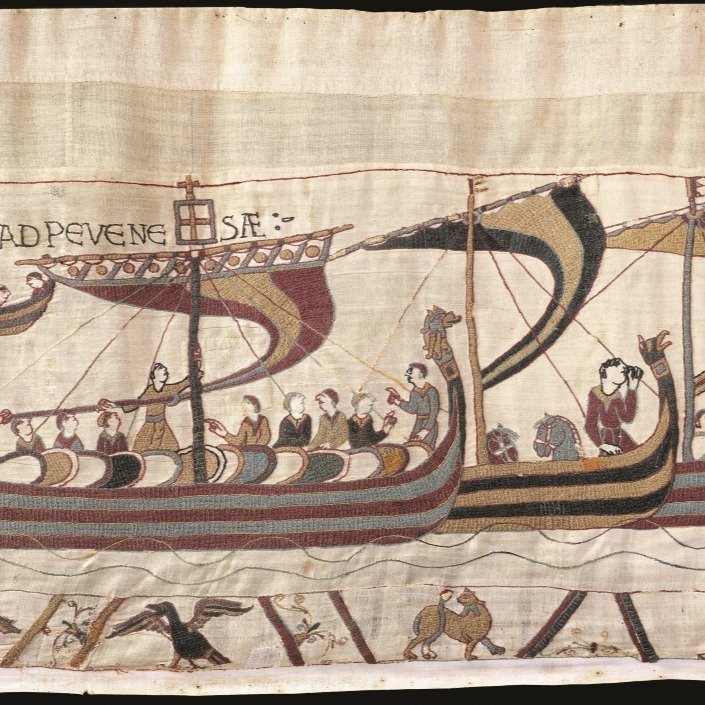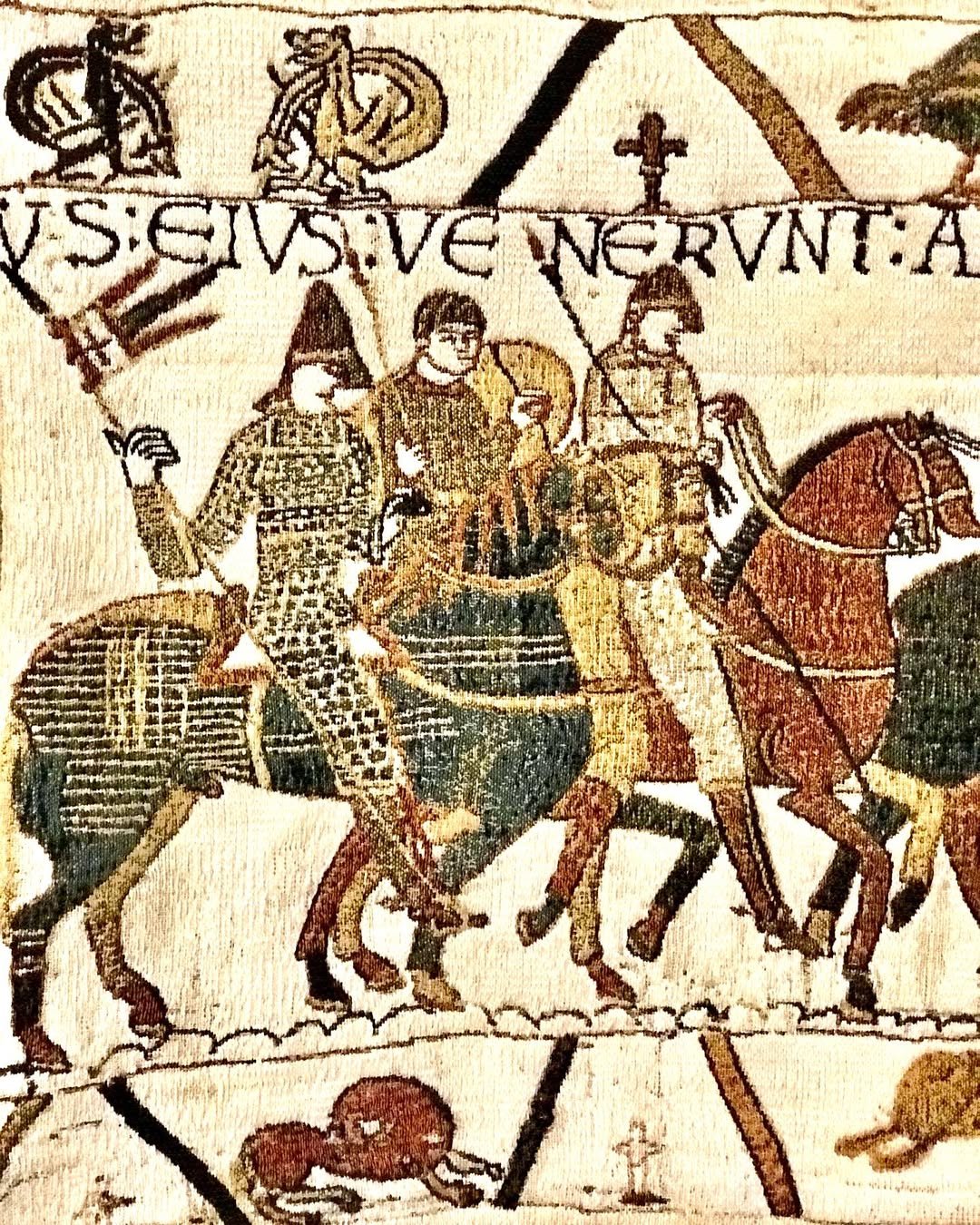The Bayeux Tapestry, a stunning relic from the 11th century, is making headlines across the UK as it prepares for its first return in nearly a millennium. This iconic embroidery, which tells the story of the Norman Conquest of England, is set to be displayed at the British Museum from September 2026 to July 2027. Its arrival marks a historic moment for British culture, sparking renewed interest in one of the world’s most celebrated artefacts.
What Is the Bayeux Tapestry?
Despite its name, the Bayeux Tapestry is not a tapestry but an embroidery. It stretches nearly 70 metres in length and 50 centimetres in height. The cloth depicts the events leading up to the Norman invasion of England in 1066 and culminates with the decisive Battle of Hastings. Created in the 1070s, the embroidery is believed to have been commissioned by Bishop Odo of Bayeux, William the Conqueror’s half-brother. Most experts agree that it was made in England, possibly in Kent, before being taken to Bayeux Cathedral in Normandy.
The tapestry consists of 58 scenes, each embroidered with vivid coloured wool on linen. Latin captions accompany the images, providing context for the dramatic story that unfolds along its length. The artistry and craftsmanship have fascinated historians, artists, and the public for centuries.
A Historic Homecoming
The tapestry’s return to the UK is the result of a landmark cultural exchange between Britain and France. The British Museum will host this extraordinary piece for the first time since it was created, almost 1,000 years ago. In exchange, the museum will loan treasures from the Sutton Hoo collection and the Lewis Chessmen to institutions in Normandy. These artefacts represent the rich heritage of all four nations of the UK.
The announcement of the loan was made during a state visit by French President Emmanuel Macron, who described the gesture as a symbol of the enduring relationship between the UK and France. UK Culture Secretary Lisa Nandy echoed this sentiment, highlighting the tapestry’s role as a bridge between two nations with a shared and often intertwined history.
The Tapestry’s Enduring Significance
The Bayeux Tapestry is more than an artwork; it is a living document of British history. It offers a unique visual account of the Norman Conquest, one of the most significant events in the nation’s past. The story it tells is familiar to generations of Britons, having been studied in schools, referenced in popular culture, and admired for its narrative power.
George Osborne, chair of the British Museum trustees, called the upcoming exhibition “the blockbuster show of our generation.” He compared its significance to previous landmark exhibitions, such as those featuring the treasures of Tutankhamun and the Terracotta Army. The museum, which attracted 6.5 million visitors in 2024, expects the tapestry to draw record crowds, especially schoolchildren eager to see history come alive.
The Artistry Behind the Masterpiece
Recent research by British experts has shed new light on how the tapestry was made. Analysis suggests that a single team of skilled embroiderers, likely working under central supervision, created the entire piece. This challenges earlier theories that it was stitched in separate sections by different groups. The embroidery’s consistent style and technique point to a coordinated effort, possibly in a Kentish workshop.
The outlines of each scene were stitched first, followed by the careful filling in of colours. The tapestry’s survival over nine centuries is remarkable, given its size and fragility. Past conservation efforts have addressed issues such as holes, stains, and tears, ensuring that the tapestry remains vibrant and intact for future generations.

Conservation and Preservation
The tapestry’s journey to London has been years in the making. Previous plans for a loan were postponed after experts found the embroidery too fragile to travel. However, a major conservation project began in January 2025, addressing areas of deterioration and preparing the tapestry for its historic trip. The Bayeux Museum in Normandy, where the tapestry is usually displayed, will close for renovation in September 2025, reopening in 2027 to mark the millennium of William the Conqueror’s birth.
The British Museum is one of only a few institutions worldwide equipped to display such a delicate and significant piece. The exhibition will feature the tapestry alongside other artefacts and interactive displays, offering visitors a comprehensive look at the Norman Conquest and its impact on British history.
A Symbol of Shared Heritage
The loan of the Bayeux Tapestry is more than a cultural event; it is a celebration of the deep ties between Britain and France. The tapestry’s story is one of conquest and change, but also of connection. Its images remind us of a pivotal moment when the destinies of two nations became forever linked.
The upcoming exhibition is part of a broader programme to mark the millennium of William the Conqueror’s birth. Museums across the UK, Ireland, the Channel Islands, and even southern Italy and Sicily will participate in exhibitions, educational programmes, and live performances celebrating Norman heritage.
Looking Forward
As the Bayeux Tapestry prepares to return to Britain, anticipation is building across the country. The exhibition promises to be a highlight of the UK’s cultural calendar, offering a rare chance to see an artefact that has shaped the nation’s identity. For many, it will be a once-in-a-lifetime opportunity to stand before the embroidery and witness the story of 1066 unfold in thread and colour.
The tapestry’s homecoming serves as a reminder of the enduring power of art, history, and international cooperation. It invites us all to reflect on our shared past and to celebrate the connections that bind us together, across centuries and borders.
Conclusion:
The Bayeux Tapestry stands as a remarkable testament to the shared history and cultural ties between the UK and France. Its detailed depiction of the Norman Conquest continues to captivate audiences, offering unique insights into a pivotal moment in British history. As it prepares for its historic return to the UK, the tapestry not only celebrates artistic achievement but also symbolises enduring international cooperation and the lasting impact of heritage on national identity.
Read More: Gregg Wallace: British TV Icon’s Controversial Journey
